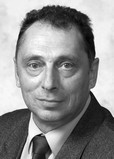Visual-motor reaction indices versus game performance of basketball players
Фотографии:
ˑ:
Dr.Hab., Professor B.E. Losin1
M.N. Larionova2
I.V. Bobrov2
1Lesgaft National State University of Physical Education, Sport and Health, St. Petersburg
2St. Petersburg Mining University, St. Petersburg
Objective of the study was to identify the role of visual-motor reaction in game activity of basketball players of different sexes, ages, and qualifications.
Methods and structure of the study. In recent years, basketball has changed significantly - the speed of the game has increased and so basketball players have less time to make decisions. It is clear that there is a need to conduct a scientific analysis and special study, which would make it possible to assess the degree of influence of visual-motor reaction on the effectiveness of competitive activity of basketball players of various qualifications, positions, age, and gender.
The study involved more than 180 basketball players. We assessed the level of development of visual-motor reaction in their arms and legs, and determined the main game indicators during the competitive activity. Based on the game indicators, we calculated an integral indicator - the coefficient of efficiency of game actions of basketball players.
Results and conclusions. The study enabled to determine the degree of influence of visual-motor reaction on the effectiveness of game activity of basketball players of different sexes and qualifications is revealed.
The conducted study made it possible to establish how the time of visual-motor reaction in the arms and legs affect the effectiveness of various indicators of game activity of basketball players of different sexes, ages and qualifications.
Keywords: game positions, game performance, visual-motor reaction indices, basketball players of various skill levels.
References
- Al Ansari Zahid Sbhi Abdulrazak Soderzhanie i metodika trenirovki tuchnoy i telesnoy lovkosti u kvalifitsirovannyih besketbolistov 16-18 let [Content and methods of obese and bodily dexterity training in skilled basketball players aged 16-18]. PhD diss.. abstr.. St. Petersburg: Lesgaft NRU publ., St. Petersburg, 2017. 23 p.
- Annenkov V.N. Sredstva i metodyi tehniko-takticheskoy podgotovki yunyih basketbolistov 8-11 let [Means and methods of technical and tactical training of junior basketball players aged 8-11 years]. PhD diss.. abstr.. St. Petersburg, 1993. 24 p.
- Krichfalushiy M.V. Razvitie byistrotyi dvigatelnyih deystviy u yunyih basketbolistov 11-12 let[Building speed of motor actions in junior basketball players aged 11-12 years]. PhD diss.. abstr.., 1978. 24 p.
- Losin B.E., Kopysova L.V. Kompleksnaya otsenka odarennosti detey 7-8 let v protsesse nachalnogo otbora dlya zanyatiy basketbolom s uchetom biologicheskogo vozrasta [Comprehensive assessment of giftedness of 7-8 year-olds in initial basketball selection process based om biological age]. Uchenye zapiski universiteta im. P.F. Lesgafta. 2005. no. 18. pp. 59-64.
- Losin B.E., Al Ansari Zahid Sbhi Abdulrazak, S.N. Elevich Vliyanie pokazateley vremeni reaktsii u yunyih kvalifitsirovannyih basketbolistov na effektivnost ih igrovoy deyatelnosti [Reaction time indices in junior qualified basketball players versus game performance]. Sportivnye igryi: nastoyaschee i buduschee [Sports games: present and future]. Proc. 4th res.-practical conf., dedicated to the 120th anniversary of Lesgaft NRU . no. 4. St. Petersburg, 2016. pp. 26-28.
- Nesterovskiy D.I. Basketbol: Teoriya i metodika obucheniya [Basketball: Theory and methods of training]. Study guide. M.: Akademiya publ., 2004. 336 p.
- Poperekov V.S. Razvitie koordinatsionnyih sposobnostey basketbolistov 10-11 let s uchetom tipologicheskih svoystv ih nervnoy sistemyi [Building coordination abilities of basketball players 10-11 years old in view of typological properties of their nervous system]. PhD diss.. abstr.. St. Petersburg, 2015. 24 p.
- Rudenko G.V., Dubrovskaya Yu.A., Bobrov I.V. Metodika opredeleniya psikhofiziologicheskogo potentsiala organizma [Individual psychophysiological potential test model]. Teoriya i praktika fiz. kultury, 2018, no. 4, pp. 8-10.



 Журнал "THEORY AND PRACTICE
Журнал "THEORY AND PRACTICE